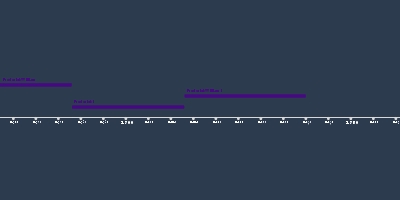Post-WWI Years (11 ноя 1918 г. – 1 сент 1939 г.)
Описание:
Austria-Hungary crumbled. Austria, Hungary, Czechoslovakia, Romania, Italy, and Poland came from its territories. Hungary briefly became a Marxist republic along Bolshevik lines and the Serbs gained a larger territory and became Yugoslavia.Like Russia, Germany experienced a dramatic revolution that replaced the authoritarian monarchy with a liberal provisional government. However, most were moderate revisionists and German nationalists. The moderates from the SPD held on to power and established the Weimar Republic. They came to terms with the army and big business. The republic was attacked from both sides of the political spectrum.
Radical Communists, led by Karl Liebknecht and Rosa Luxemburg, tried to seize control in the Spartacist Uprising. The rebellion was crushed by the Free Corps militias, and the two leaders were arrested and murdered. The Free Corps crushed a brief communist republic in Bavaria. Nationwide strikes by leftist workers and short-lived, right-wing military takeover, the Kapp Putsch, was repressed by the central government. The violence had calmed down, but deep discontent remained. Right-wing nationalists, including the newly-formed Nazis, claimed the they had never lost the war and were instead stabbed in the back by socialists, pacifists, and communists.
The Versailles Treaties concluded the First World War and made several major changes to Europe. It punished Germany but did not dismember it. It redrew the map of Europe by carving apart Austria-Hungary and the Ottoman Empire, granting German colonies to France, Britain, and Japan, created an independent Polish state, and giving Alsace-Lorraine back to France. The treaties created a defensive alliance between Britain, France and the U.S. It was the beginning of the healing of post-war Europe (see "Treaty of Versailles").
The hopes of the conference quickly went away. The U.S. Senate and some of the American public rejected the deals. Wilson rejected all compromise and thus ensured that the Senate would never ratify the treaty and that the U.S. would never join the League of Nations. The Senate refused to agree to the defensive alliance. Great Britain followed suit. France stood alone. Additionally, national self-determination was flawed in practice. The new central European nations proved to be economically weak and politically unstable.
Allied leaders also dealt with the Ottoman Empire. Britain backed down from their previous Arab support and vague promises of an Arab kingdom in favor of ruling the lands with France. In their secret agreements, most notably the Sykes-Picot Agreement, they agreed that the lands would be administered by Europeans under what they called the mandate system. Former Ottoman territories, as well as former German colonies, would be ruled under “tutelage” of European authorities until they could “stand alone”. France would govern Lebanon, Syria, and southern Turkey, and Britain could control Palestine, Transjordan, and Iraq. This faced resentment from critics and Arabs who labeled it as colonialism.
The Balfour Declaration promised a homeland for Jewish people in Palestine that would not infringe on non-Jews. This enraged Arabs, who were the majority of this region. Most Arab leaders' input at the Paris Peace Conference was fruitless. They met in Damascus as the General Syrian Congress in 1919 and proclaimed Syria independent, and a similar congress did the same with Iraq. The French quickly responded by taking over Syria, and the British put down an uprising in Iraq and established control. These regions would experience anti-imperial riots and violent religious conflicts for decades.
The Allies were even harsher on the Turks. Britain, France, Italy, and Turkey claimed parts of modern-day Turkey. Greece wanted to incorporate the Greek minority in western Turkey and build a Byzantium-like empire. While European forces intruded, a Turkish National Movement emerged, led by Mustafa Kemal. They overthrew the sultan and refused to acknowledge the Allied dismemberment of the country. A revived Turkish army faced heavy losses but managed to push back the invaders. After long peace talks, the Treaty of Lausanne recognized the territorial integrity of Turkey. What followed was a prime example and model of ethnic cleansing. Greeks were forced to leave Turkish-majority lands for Greece, while Turks were forced out of Greece and Balkan territories to Turkey. Refugees faced harsh conditions, and these actions destroyed a vital, multicultural, ethnic patchwork.
Kemal, who believed Turkey should modernize and secularize along Western lines, established a republic, was elected president, created a one-party system, and set out to transform the country. He further separated church and state, granted women more rights, and moved Turkey closer to European influence.
Nations struggled to deal with the losses of the war. About 8 million died on the battlefield. Between 7 and 10 million civilians died because of the war. 20 million died to the influenza epidemic. Russia faced the most casualties, followed by Germany, but France had the most proportionate deaths. Proper burials were difficult and many soldiers remained unidentified. All at home expressed the need to recognize the sorrow and suffering. Holidays commemorated important dates, many nations built a Tomb of the Unknown Soldier, and memorials were built on the main battlefields. Many soldiers experienced PTSD, which physicians and policymakers knew little about. There was rarely enough money for the government to adequately take care of disfigured and mutilated veterans; many were forced to beg. Germany especially experienced these woes. Across Europe, radical right-wing parties flared up and manipulated these feelings to undermine parliamentary governments.
Добавлено на ленту времени:
Дата:
11 ноя 1918 г.
1 сент 1939 г.
~ 20 years
